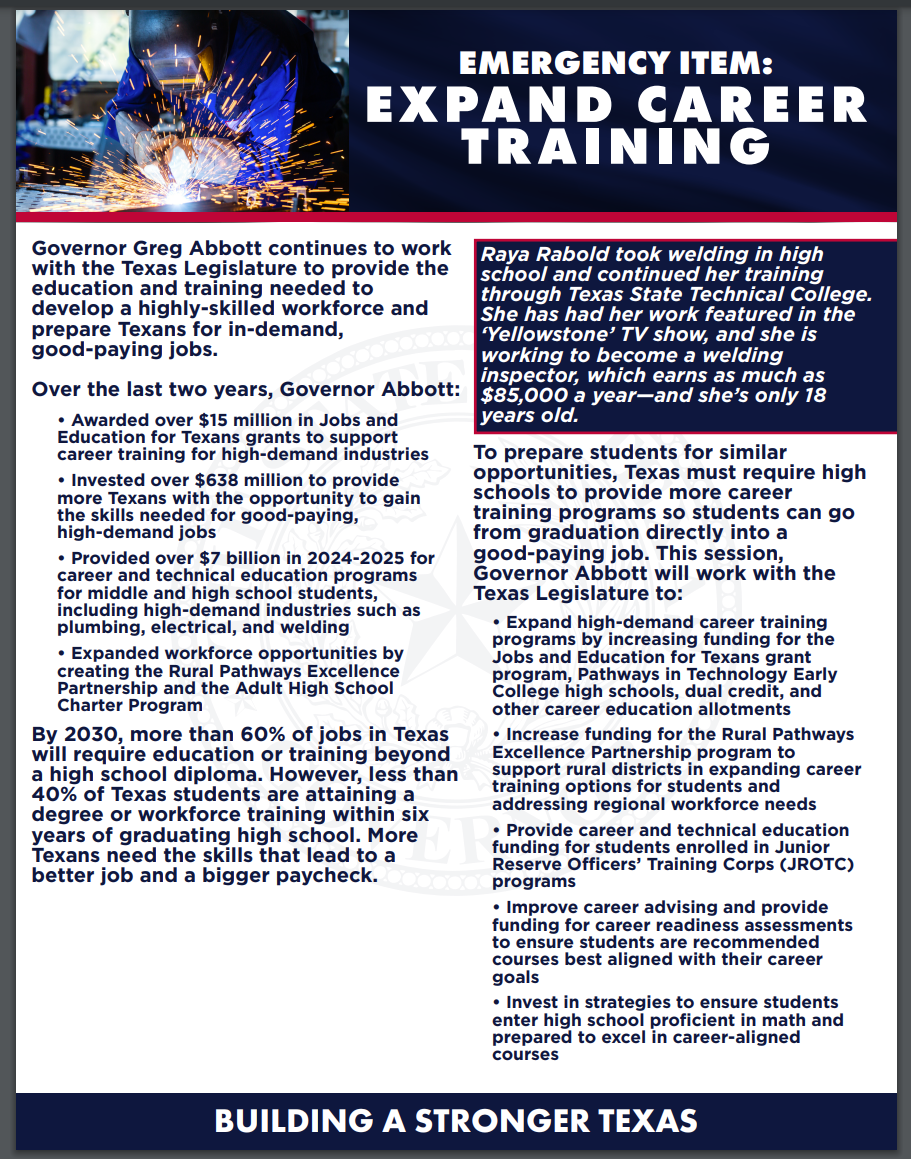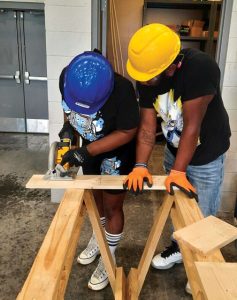News To Know

Why Your High School Needs a Construction Program
 A high school construction program can be a game-changer for students and the surrounding community. Here are a few reasons why construction is a great choice for starting or expanding your career and technical education (CTE) offerings.
A high school construction program can be a game-changer for students and the surrounding community. Here are a few reasons why construction is a great choice for starting or expanding your career and technical education (CTE) offerings.
The Booming Landscape:
With the rising investments in energy, transportation, housing and manufacturing and a retiring workforce, the construction industry is experiencing a high demand for skilled labor. The Bureau of Labor Statistics (BLS) projects nearly 650,000 annual job openings within the construction and extraction occupations over the next several years. Skilled labor is desperately needed, offering lucrative careers with minimal postsecondary education required. For your students, this translates to:
- Direct entry into high-paying jobs: The median annual salary for carpenters is $51,390, and for electricians is $60,240 (BLS). Students starting their career path in high school may achieve financial stability earlier in their careers, which can break generational cycles and empower entire families.
- Hands-on learning: Construction engages diverse learning styles, catering to students who thrive in a practical environment. Math and science become tangible, making academics more meaningful.
- Valuable life skills: Problem-solving, teamwork, safety and attention to detail are honed with every project, building soft skills and well-rounded individuals.
Building Success with Limited Resources:
Starting a construction program may seem like a daunting task, but it does not have to be resource heavy. Here are a few tips and resources for getting a program up and running:
- Start with the basics: Focus on teaching basic construction skills. NCCER’s High School Builder Program is a turnkey solution that includes instructor training, curriculum, lesson plans, testing and access to expert advice on building your program. Once your program launches, then gradually expand as resources allow.
- Maximize resources: Existing CTE, science and math teachers at your school can often be quickly trained in basic construction skills and are the perfect fit to lead an introductory class. This is an effective way to maximize your existing staff to launch your new program amid the nationwide teacher shortage.
- Leverage community partnerships: Local contractors, industry association chapters and businesses (such as lumberyards or hardware stores) can be invaluable partners for program guidance, project materials, internships and guest speakers.
- Apply for grants and funding: Construction CTE programs that lead to industry-recognized credentials, such as NCCER, often meet requirements for state and federal funding like the Perkins V grant.
The Ripple Effect:
A construction program benefits not just students, but the entire community. A few of the long-term outcomes can include:
- Boosted local economy: Skilled graduates can contribute to local construction projects, keeping dollars circulating within the community.
- Reduced reliance on outside labor: Local craft professionals can be trained and recruited from within, benefiting community development.
- Increased property values: Well-maintained and skillfully built communities raise property values and attract new residents.
Taking the First Step:
By building a construction program, you are not just creating pathways to careers; you are building a stronger, more prosperous future for your students and your community. NCCER’s High School Builder Program offers expert guidance, curriculum and instructor resources to help you get started. Funding assistance may be available in some areas, reach out to learn more and let’s work together to make your vision a reality.
* Courtesy of the National Center for Construction Education & Research.
